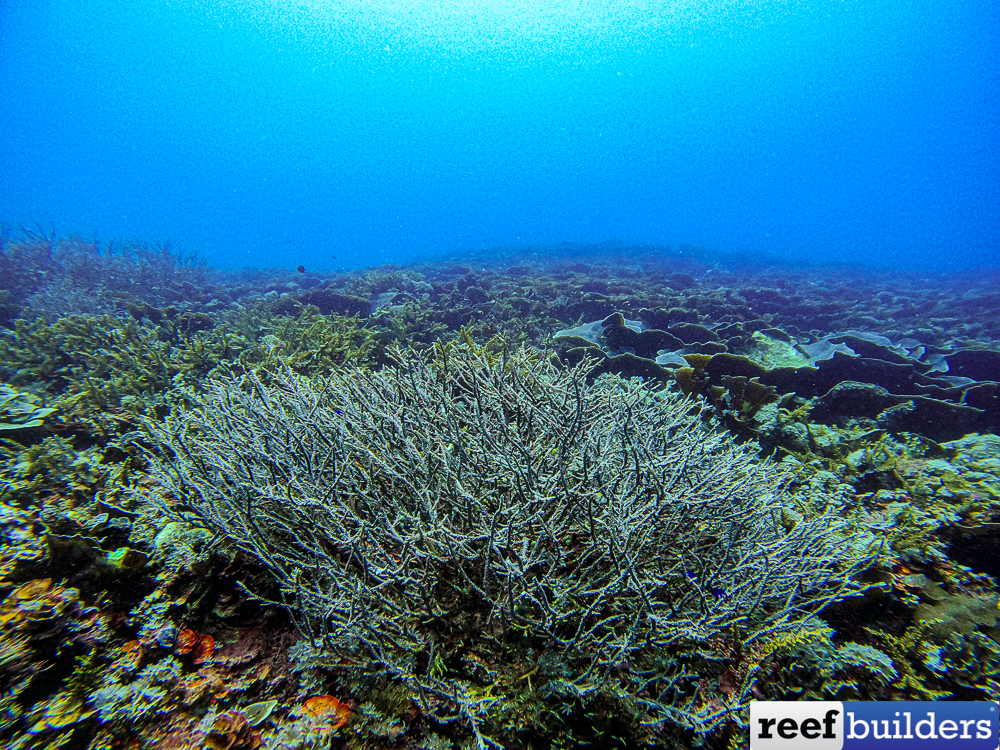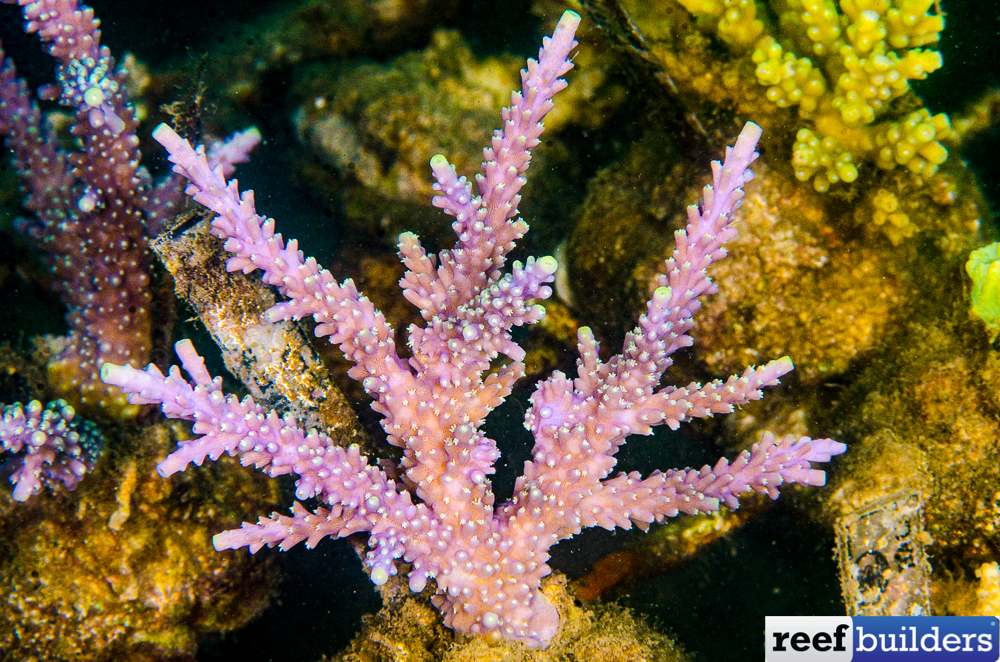Some species of Acropora can go under the radar for many years until, during a dive, we pass by a large field of them, and wonder why this particular Acro is not in all reef tanks.
Acropora horrida is quite a common staghorn coral that enjoys protected calm bays often with turbid water. We can find it from 3m (10ft) to 25m (75ft) water depth, where its colony shape changes drastically. This is to do with its capacity for adaptation to light.

In shallow water, the colonies are predominantly arborescent, composed of sturdy, long-opened branches. In deeper water however, it becomes more compact, flat, thin, and bushy. Branches start to lean down to expose more surface area in diminishing light.
In turbid water, the main branches of colonies have irregular branchlets, but those in shallow, clear water have compact branchlets, giving colonies a bushy appearance.
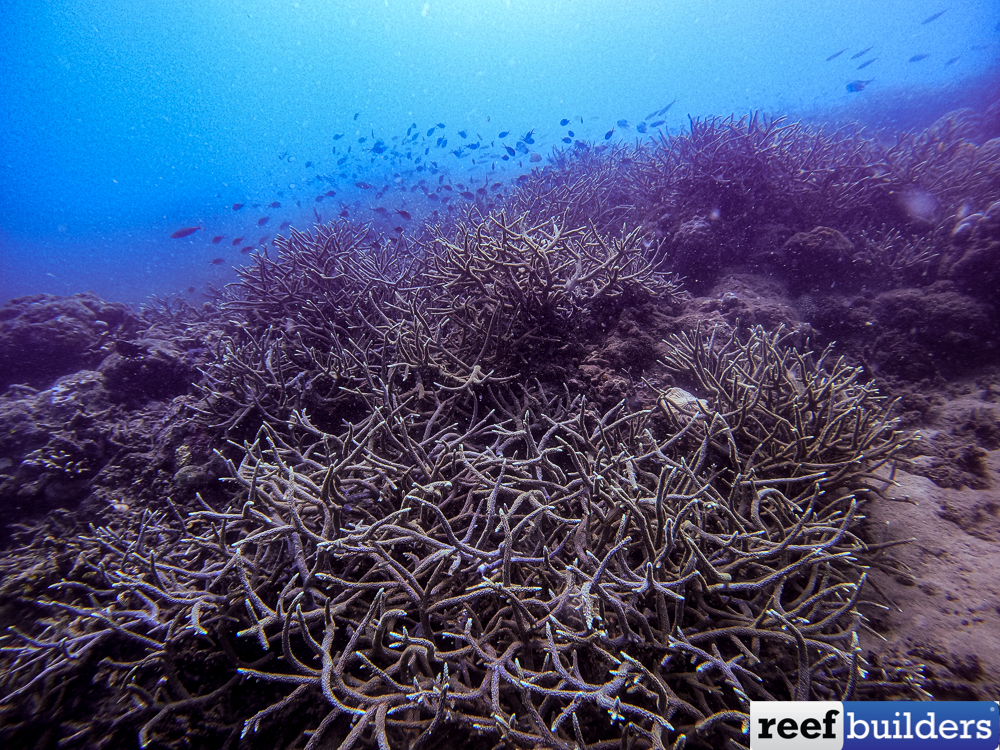
The corallites of Acropora horrida are irregular and the surface of the branches is rough. Its axial corallites are large and tubular, while the radial corallites are also tubular with oval, rounded openings, of one size or grade. Tentacles are extended during the day which gives them a very furry appearance and a really interesting look, another good reason to maintain them in aquariums.
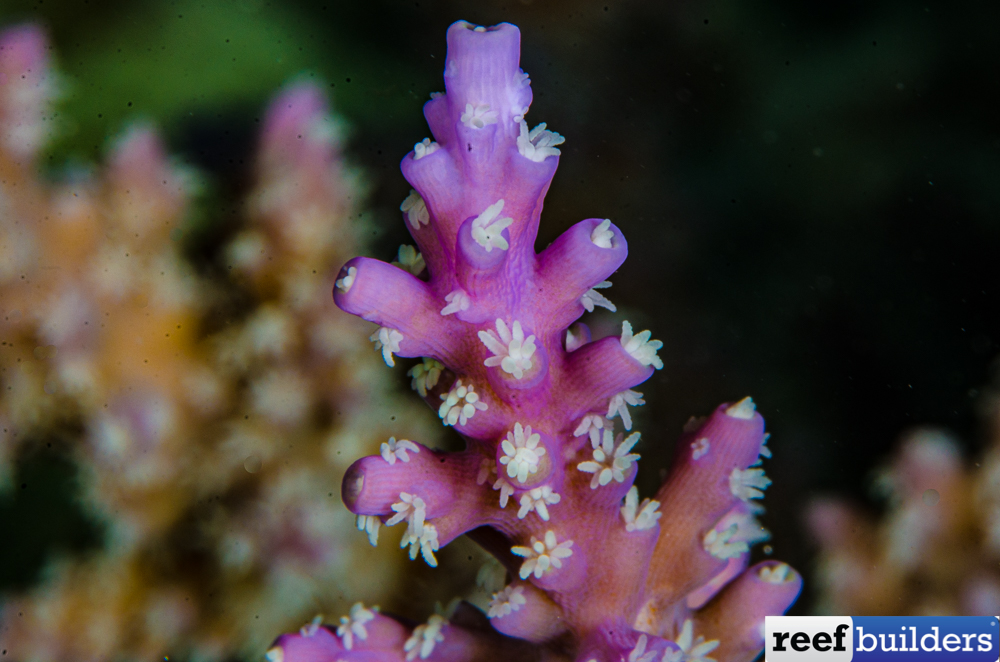
In the wild, there are quite a few pale-looking colorations, but the main one is pretty amazing. Bright pink branches with fluorescent green corallites, tips, and tentacles. Could we ask for any more from an aquarium Acro? The pink color will not be very obvious under blue led light, but it looks better under white lighting.
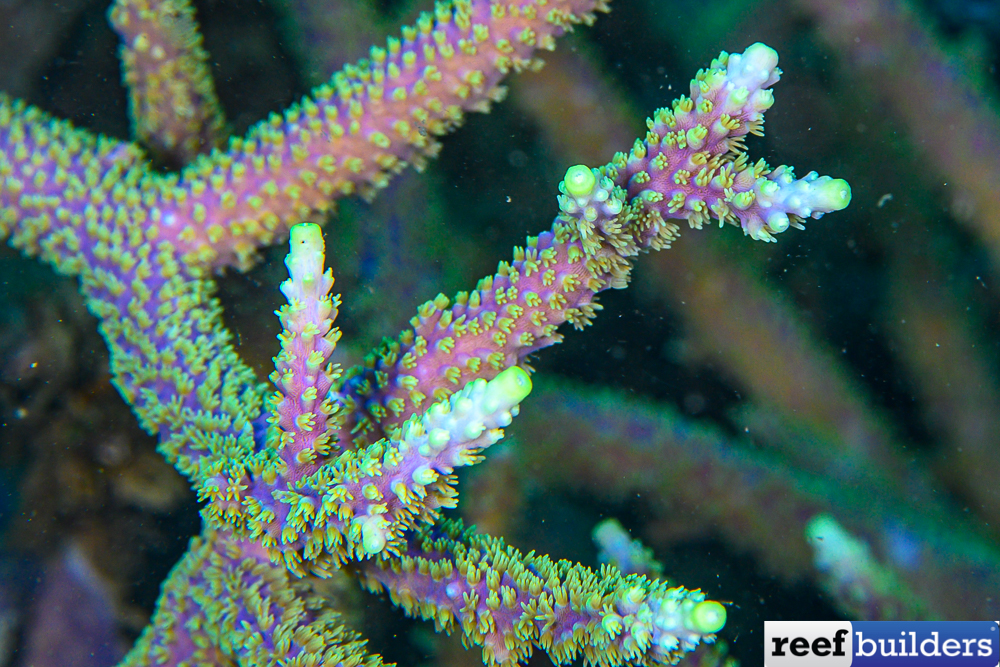
This coral is quite malleable and can adapt to wide a range of conditions, especially when it comes to light. It can probably adapt to PAR readings from 200 all the way up to 1000. It prefers sheltered bays, so it’s not fond of crazy high flow and in terms of water quality, it prefers a little bit of nutrients, and will fade in very clean water.
Acropora horrida is a very colorful, fast-growing, and adaptive species, that aquarists from all over the world should be maintaining.
